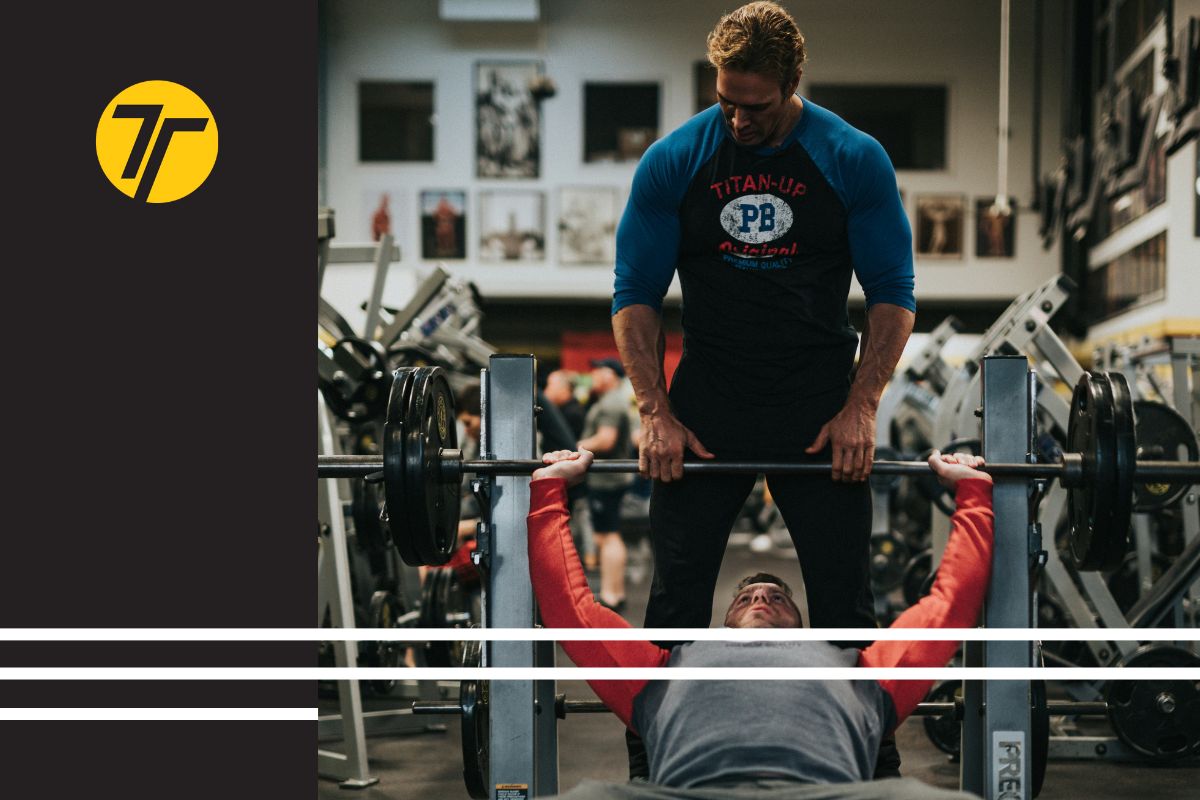
Your new client walks through the door or joins your video call, ready to start their fitness journey. But where exactly ARE they on that journey? Without a proper assessment, you’re basically training in the dark. 🔦
That’s why fitness assessments are non-negotiable as a personal trainer. Not only do they give you a starting point, but they ultimately help you create targeted, effective programs that actually get results. 💪
But we get it—knowing exactly what to assess, when to do it, and how to make it valuable for your clients can feel confusing or unclear.
Don’t sweat it! We’re breaking down everything you need to know about personal trainer assessments. By the end of this article, you’ll have a clear game plan for evaluating clients and setting them up for success.
Ready to level up your assessment game? Let’s dive in!
The Importance of Client Assessments for Fitness Professionals
Think of personal trainer assessments as your roadmap to achieving your clients’ fitness goals.
Assessments reveal important details that help you create truly personalized training programs—from lifestyle factors like sleep patterns and stress levels, to physical considerations like mobility restrictions or muscle imbalances.
Consider this scenario:
During an initial assessment, a trainer discovered their client had significant shoulder mobility issues on their right side from years at a desk job. Instead of diving straight into upper body training, the trainer first addressed this imbalance with targeted mobility work. The result? A pain-free client who could actually enjoy their workouts!
Without that initial assessment, the trainer might have jumped into exercises that could have caused injury or frustration for the client.
And that’s exactly why assessments matter—they help you make informed decisions that set your clients up for long-term success.
Check Out: How to Write the Perfect Initial Client Questionnaire
Overview of Different Assessment Types
Let’s break down the key assessment types you’ll want to include in your training toolkit:
- Health and lifestyle assessments help you understand your client’s daily habits, health history, and goals—giving you the full picture of their wellness journey.
- Body composition assessments track physical changes beyond the scale, showing your clients real progress in their body composition goals.
- Fitness testing methods measure your client’s current abilities in areas like strength, endurance, and flexibility.
- Posture and movement analysis reveals how your clients move in real life, helping you spot potential issues before they become problems.
Keep reading to dig deeper into each type! ⬇️
Personal Trainer Assessment #1: Health and Lifestyle Assessments
Before jumping into any physical testing, you need to understand your client’s overall health. This is where health and lifestyle assessments come in—they provide essential clues into who your client is and what might impact their fitness journey.
Check Out: Must-Listen Personal Trainer Podcasts for Professional Growth
Here are two assessments to get you started:
Health and lifestyle questionnaire
A well-designed questionnaire helps you gather crucial info about your client’s daily routine, stress levels, sleep patterns, and nutrition habits.
Ask about their typical day, including work hours, eating schedule, and current activity level.
This information helps you create exercise programs that actually fit into their life. Because let’s face it—even the best training plan won’t work if it doesn’t align with their lifestyle!
Check Out: 6 Nutrition Coaching Tips to Keep Clients Motivated
Identifying medical history and lifestyle factors
This part of the assessment is all about safety and smart programming. You’ll want to know about:
- Previous injuries or surgeries
- Ongoing medical conditions (e.g., high blood pressure)
- Current medications
- Family health history
- Stress levels and management
- Daily movement patterns
With this information, you’ll know exactly which exercises to choose and how to build the perfect fitness program for your client.
For example, if your client has a history of lower back issues, you’ll know to prioritize core strength before jumping into heavy lifting. Or if they’re dealing with high stress levels, you might need to adjust workout intensity accordingly.
Personal Trainer Assessment #2: Body Composition Assessments
Understanding your client’s body composition gives you powerful data to track their progress beyond just the number on the scale. These measurements help you show clients real, measurable changes in their body—keeping them motivated for the long haul.
Methods of measuring body composition
Here are three reliable methods you can use to track body composition:
- Calipers
Simple and cost-effective, skinfold calipers measure subcutaneous fat at specific spots on the body. Just remember—accuracy depends on proper technique and measuring at the same spots each time.
- Bioelectrical impedance analysis (BIA)
These devices send a harmless electrical current through the body to estimate body fat percentage. While they’re easy to use, the numbers can vary based on your client’s hydration levels and recent training sessions.
- Girth measurements
Using a simple measuring tape, track changes in key areas like waist, hips, chest, and arms. This method is especially motivating for clients focused on losing inches or chasing gains! 💪
Tracking changes over time
The real value of body composition assessments comes from consistent tracking. Here’s what to remember:
- Take measurements at the same time of day
- Use the same measurement methods each time
- Document everything thoroughly
- Schedule regular check-ins (every 4-6 weeks works well)
This data helps you adjust programs based on actual results and shows clients concrete evidence of their progress!
Personal Trainer Assessment #3: Physical Fitness Testing Methods
Fitness testing gives you a clear snapshot of your client’s current abilities and level of physical activity. These assessments help you set realistic goals, create custom programming, and measure improvements over time.
Cardiovascular endurance tests
Testing cardiovascular fitness helps you understand how efficiently your client’s heart and lungs work during exercise—AKA their overall cardiovascular health. This’ll help you design safe and effective cardio programs that gradually improve their endurance!
Examples of effective cardio assessments:
- 3-minute step test: Perfect for baseline testing and easy to do anywhere. Measures heart rate recovery after stepping up and down.
- 12-minute walk/run test: Great for tracking cardiovascular improvements. Easy to replicate for measuring progress.
Muscular strength tests
Muscular endurance testing—also known as strength testing—helps you understand what your client can actually do, not what they think they can do. With this info, you’ll know exactly where to start with weights and how to progress them safely.
Focus on these key tests:
- Push-up test: Push-ups assess upper body strength and endurance. Can be easily modified for different fitness levels.
- Bodyweight squat assessment: Evaluates lower body strength and form. Helps identify potential mobility restrictions.
Flexibility tests and mobility assessments
Understanding your client’s range of motion and flexibility helps prevent injuries and improves exercise form. These tests highlight areas that need extra attention during warm-ups and recovery!
Include these essential movement checks:
- Sit and reach test: Simple way to measure hamstring and lower back flexibility. Easy to perform and track progress over time.
- Overhead shoulder mobility: Shows you exactly how well your client’s shoulders move. Helps you spot potential issues before they affect training.
Always start with exercises that match your client’s current fitness level, and retest every 8-12 weeks to track improvements. This data helps you prove your value as a trainer while keeping clients motivated with measurable progress! 💪
Personal Trainer Assessment #4: Posture Analysis and Movement Assessments
Want to help your clients move better and stay injury-free? It all starts with understanding your client’s ability and how they move in real life.
Importance of movement screening
Fucntional movement screening shows you how your client’s body works as one unit—not just individual muscles or joints. This knowledge helps you:
- Spot compensation patterns early
- Identify potential injury risks
- Create more effective exercise progressions
- Choose the right exercise modifications
Techniques for assessing posture and movement
Here are key assessments to include:
- Static posture check: Observe your client’s natural standing position. Look for alignment issues like forward head or rounded shoulders.
- Basic movement patterns: Watch how they perform everyday movements, such as:
– Squatting to pick something up
– Reaching overhead
– Walking and balance
– Single-leg movements
Remember: The goal isn’t perfect form—it’s understanding how your client naturally moves so you can help them move better!
Personal Trainer Assessments Made Easier with ABC Trainerize
Ready to streamline your assessment process? ABC Trainerize makes it easy to digitize the entire personal training experience.
From customizable assessment forms to progress tracking tools, you’ll have everything you need to evaluate clients, store their data (including your personal trainer assessment forms!) and monitor their progress—all in one place. 🙌
Start your free trial of ABC Trainerize today and discover how much easier client assessments can be!

